Search for Indicators
All Data
Indicator Gauge Icon Legend
Legend Colors
Red is bad, green is good, blue is not statistically different/neutral.
Compared to Distribution
 the value is in the best half of communities.
the value is in the best half of communities.
 the value is in the 2nd worst quarter of communities.
the value is in the 2nd worst quarter of communities.
 the value is in the worst quarter of communities.
the value is in the worst quarter of communities.
Compared to Target
 meets target;
meets target;  does not meet target.
does not meet target.
Compared to a Single Value
 lower than the comparison value;
lower than the comparison value;
 higher than the comparison value;
higher than the comparison value;
 not statistically different from comparison value.
not statistically different from comparison value.
Trend

 non-significant change over time;
non-significant change over time; 
 significant change over time;
significant change over time;  no change over time.
no change over time.
Compared to Prior Value
 higher than the previous measurement period;
higher than the previous measurement period;
 lower than the previous measurement period;
lower than the previous measurement period;
 no statistically different change from previous measurement period.
no statistically different change from previous measurement period.
State: Hawaii
Health / Tobacco Use
Value
Compared to:
State: Hawaii Teens Who Got E-Cigarettes from a Retailer
State: Hawaii Teens Who Got E-Cigarettes from a Retailer
7.6%
(2021)
Compared to:


TPC Plan Target
(1.3%)
State: Hawaii Teens Who Got E-Cigarettes from Social Source
State: Hawaii Teens Who Got E-Cigarettes from Social Source
57.8%
(2021)
Compared to:


TPC Plan Target
(49.5%)
State: Hawaii Teens Who Got E-Cigarettes from the Internet
State: Hawaii Teens Who Got E-Cigarettes from the Internet
2.0%
(2021)
Compared to:


TPC Plan Target
(0%)
State: Hawaii Teens Who Have Ever Tried a Cigarette
State: Hawaii Teens Who Have Ever Tried a Cigarette
13.3%
(2021)
Compared to:





US Value
(17.8%)
The regional value is compared to the national value.

Prior Value
(17.8%)
Prior Value compares a measured value with the previously measured value. Confidence intervals were taken into account in determining the direction of the comparison.

Trend
This comparison measures the indicator’s values over multiple time periods.<br>The Mann-Kendall Test for Statistical Significance is used to evaluate the trend<br>over 4 to 10 periods of measure, subject to data availability and comparability.

TPC Plan Target
(8.8%)
State: Hawaii Teens Who Smoke Cigarettes
State: Hawaii Teens Who Smoke Cigarettes
3.0%
(2021)
Compared to:






US Value
(3.8%)
The regional value is compared to the national value.

Prior Value
(5.3%)
Prior Value compares a measured value with the previously measured value. Confidence intervals were taken into account in determining the direction of the comparison.

Trend
This comparison measures the indicator’s values over multiple time periods.<br>The Mann-Kendall Test for Statistical Significance is used to evaluate the trend<br>over 4 to 10 periods of measure, subject to data availability and comparability.

HP 2030 Target
(3.4%)
<div><span>TU-06: Reduce current cigarette smoking in adolescents<br /><br />The national indicator is defined in exactly the same way. The data source for the national indicator is the National Youth Tobacco Survey. The state data source is the Youth Risk Behavior Survey, which is comparable to the national data source. It is divided into two groups: grades 6-8 and grades 9-12. This indicator reports data for students in grades 9-12, while the indicator ‘Young Teens Who Smoke Cigarettes' reports for those in grades 6-8. </span></div>

TPC Plan Target
(3.4%)
State: Hawaii Teens who Smoke Cigars
State: Hawaii Teens who Smoke Cigars
2.8%
(2019)
Compared to:



Prior Value
(4.2%)
Prior Value compares a measured value with the previously measured value. Confidence intervals were taken into account in determining the direction of the comparison.

Trend
This comparison measures the indicator’s values over multiple time periods.<br>The Mann-Kendall Test for Statistical Significance is used to evaluate the trend<br>over 4 to 10 periods of measure, subject to data availability and comparability.
State: Hawaii Teens Who Smoke Menthol Cigarettes
State: Hawaii Teens Who Smoke Tobacco in a Hookah
State: Hawaii Teens Who Smoke Tobacco in a Hookah
3.0%
(2019)
Compared to:


Prior Value
(4.0%)
Prior Value compares a measured value with the previously measured value. Confidence intervals were taken into account in determining the direction of the comparison.
State: Hawaii Teens Who Tried to Quit Smoking
State: Hawaii Teens Who Tried to Quit Smoking
66.7%
(2017)
Compared to:



Prior Value
(68.4%)
Prior Value compares a measured value with the previously measured value. Confidence intervals were taken into account in determining the direction of the comparison.

Trend
This comparison measures the indicator’s values over multiple time periods.<br>The Mann-Kendall Test for Statistical Significance is used to evaluate the trend<br>over 4 to 10 periods of measure, subject to data availability and comparability.
State: Hawaii Teens Who Use E-Cigarettes
State: Hawaii Teens Who Use E-Cigarettes
14.8%
(2021)
Compared to:






US Value
(18.0%)
The regional value is compared to the national value.

Prior Value
(30.6%)
Prior Value compares a measured value with the previously measured value. Confidence intervals were taken into account in determining the direction of the comparison.

Trend
This comparison measures the indicator’s values over multiple time periods.<br>The Mann-Kendall Test for Statistical Significance is used to evaluate the trend<br>over 4 to 10 periods of measure, subject to data availability and comparability.

HP 2030 Target
(10.5%)
<div><span>TU-05: Reduce current e-cigarettes use in adolescents<br /><br />The national indicator is defined in exactly the same way. The data source for the national indicator is the National Youth Tobacco Survey. The state data source is the Youth Risk Behavior Survey, which is comparable to the national data source. It is divided into two groups: grades 6-8 and grades 9-12. This indicator reports data for students in grades 9-12, while the indicator ‘Young Teens Who Use E-Cigarettes' reports for those in grades 6-8. </span></div>

TPC Plan Target
(10.5%)
State: Hawaii Teens Who Use E-Cigarettes Due to Flavors
State: Hawaii Teens Who Use E-Cigarettes Due to Flavors
2.5%
(2021)
Compared to:


TPC Plan Target
(0%)
State: Hawaii Teens who Use Smokeless Tobacco
State: Hawaii Teens who Use Smokeless Tobacco
2.2%
(2019)
Compared to:



Prior Value
(3.2%)
Prior Value compares a measured value with the previously measured value. Confidence intervals were taken into account in determining the direction of the comparison.

Trend
This comparison measures the indicator’s values over multiple time periods.<br>The Mann-Kendall Test for Statistical Significance is used to evaluate the trend<br>over 4 to 10 periods of measure, subject to data availability and comparability.
State: Hawaii Teens Who Use Tobacco YTS
State: Hawaii Teens Who Use Tobacco YTS
33.7%
(2019)
Compared to:



Prior Value
(23.2%)
Prior Value compares a measured value with the previously measured value. Confidence intervals were taken into account in determining the direction of the comparison.

Trend
This comparison measures the indicator’s values over multiple time periods.<br>The Mann-Kendall Test for Statistical Significance is used to evaluate the trend<br>over 4 to 10 periods of measure, subject to data availability and comparability.
State: Hawaii Young Teens Who Are Susceptible to Smoking Initiation
State: Hawaii Young Teens Who Are Susceptible to Smoking Initiation
23.8%
(2019)
Compared to:



Prior Value
(22.3%)
Prior Value compares a measured value with the previously measured value. Confidence intervals were taken into account in determining the direction of the comparison.

Trend
This comparison measures the indicator’s values over multiple time periods.<br>The Mann-Kendall Test for Statistical Significance is used to evaluate the trend<br>over 4 to 10 periods of measure, subject to data availability and comparability.
State: Hawaii Young Teens Who Ever Tried E-Cigarettes
State: Hawaii Young Teens Who Ever Tried E-Cigarettes
12.8%
(2021)
Compared to:




Prior Value
(30.6%)
Prior Value compares a measured value with the previously measured value. Confidence intervals were taken into account in determining the direction of the comparison.

Trend
This comparison measures the indicator’s values over multiple time periods.<br>The Mann-Kendall Test for Statistical Significance is used to evaluate the trend<br>over 4 to 10 periods of measure, subject to data availability and comparability.

TPC Plan Target
(23%)
State: Hawaii Young Teens Who Ever Tried Tobacco in a Hookah
State: Hawaii Young Teens Who Ever Tried Tobacco in a Hookah
1.6%
(2019)
Compared to:




US Value
(3.0% in 2013)
The regional value is compared to the U.S. value.

Prior Value
(2.9%)
Prior Value compares a measured value with the previously measured value. Confidence intervals were taken into account in determining the direction of the comparison.

Trend
This comparison measures the indicator’s values over multiple time periods.<br>The Mann-Kendall Test for Statistical Significance is used to evaluate the trend<br>over 4 to 10 periods of measure, subject to data availability and comparability.
State: Hawaii Young Teens Who Frequently Use E-Cigarettes
State: Hawaii Young Teens Who Frequently Use E-Cigarettes
1.8%
(2021)
Compared to:



Prior Value
(3.0%)
Prior Value compares a measured value with the previously measured value. Confidence intervals were taken into account in determining the direction of the comparison.

TPC Plan Target
(0%)
State: Hawaii Young Teens Who Got E-Cigarettes from a Retailer
State: Hawaii Young Teens Who Got E-Cigarettes from a Retailer
0.9%
(2021)
Compared to:


TPC Plan Target
(0%)
State: Hawaii Young Teens Who Got E-Cigarettes from Social Source
State: Hawaii Young Teens Who Got E-Cigarettes from Social Source
58.5%
(2021)
Compared to:


TPC Plan Target
(48.8%)
State: Hawaii Young Teens Who Got E-Cigarettes from the Internet
State: Hawaii Young Teens Who Got E-Cigarettes from the Internet
1.3%
(2021)
Compared to:


TPC Plan Target
(0%)
State: Hawaii Young Teens Who Have Ever Tried a Cigarette
State: Hawaii Young Teens Who Have Ever Tried a Cigarette
7.1%
(2021)
Compared to:




Prior Value
(10.5%)
Prior Value compares a measured value with the previously measured value. Confidence intervals were taken into account in determining the direction of the comparison.

Trend
This comparison measures the indicator’s values over multiple time periods.<br>The Mann-Kendall Test for Statistical Significance is used to evaluate the trend<br>over 4 to 10 periods of measure, subject to data availability and comparability.

TPC Plan Target
(0.7%)
State: Hawaii Young Teens Who Smoke Cigarettes
State: Hawaii Young Teens Who Smoke Cigarettes
1.9%
(2021)
Compared to:





Prior Value
(3.9%)
Prior Value compares a measured value with the previously measured value. Confidence intervals were taken into account in determining the direction of the comparison.

Trend
This comparison measures the indicator’s values over multiple time periods.<br>The Mann-Kendall Test for Statistical Significance is used to evaluate the trend<br>over 4 to 10 periods of measure, subject to data availability and comparability.

HP 2030 Target
(3.4%)
<div><span>TU-06: Reduce current cigarette smoking in adolescents<br /><br />The national indicator is defined in exactly the same way. The data source for the national indicator is the National Youth Tobacco Survey. The state data source is the Youth Risk Behavior Survey, which is comparable to the national data source. It is divided into two groups: grades 6-8 and grades 9-12. This indicator reports data for students in grades 6-8, while the indicator ‘Teens Who Smoke Cigarettes' reports for those in grades 9-12. </span></div>

TPC Plan Target
(3.4%)
State: Hawaii Young Teens who Smoke Cigars
State: Hawaii Young Teens who Smoke Cigars
1.4%
(2019)
Compared to:



Prior Value
(2.0%)
Prior Value compares a measured value with the previously measured value. Confidence intervals were taken into account in determining the direction of the comparison.

Trend
This comparison measures the indicator’s values over multiple time periods.<br>The Mann-Kendall Test for Statistical Significance is used to evaluate the trend<br>over 4 to 10 periods of measure, subject to data availability and comparability.
State: Hawaii Young Teens Who Smoke Menthol Cigarettes
State: Hawaii Young Teens Who Smoke Menthol Cigarettes
5.0%
(2021)
Compared to:


TPC Plan Target
(3.4%)
State: Hawaii Young Teens Who Smoke Tobacco in a Hookah
State: Hawaii Young Teens Who Smoke Tobacco in a Hookah
0.9%
(2019)
Compared to:


Prior Value
(1.4%)
Prior Value compares a measured value with the previously measured value. Confidence intervals were taken into account in determining the direction of the comparison.
State: Hawaii Young Teens Who Tried to Quit Smoking
State: Hawaii Young Teens Who Tried to Quit Smoking
70.7%
(2015)
Compared to:



Prior Value
(65.6%)
Prior Value compares a measured value with the previously measured value. Confidence intervals were not taken into account in determining the direction of the comparison.

Trend
This comparison measures the indicator’s values over multiple time periods.<br>The Mann-Kendall Test for Statistical Significance is used to evaluate the trend<br>over 4 to 10 periods of measure, subject to data availability and comparability.
State: Hawaii Young Teens Who Use E-Cigarettes
State: Hawaii Young Teens Who Use E-Cigarettes
6.7%
(2021)
Compared to:





Prior Value
(17.7%)
Prior Value compares a measured value with the previously measured value. Confidence intervals were taken into account in determining the direction of the comparison.

Trend
This comparison measures the indicator’s values over multiple time periods.<br>The Mann-Kendall Test for Statistical Significance is used to evaluate the trend<br>over 4 to 10 periods of measure, subject to data availability and comparability.

HP 2030 Target
(10.5%)
<div><span>TU-05: Reduce current e-cigarettes use in adolescents<br /><br />The national indicator is defined in exactly the same way. The data source for the national indicator is the National Youth Tobacco Survey. The state data source is the Youth Risk Behavior Survey, which is comparable to the national data source. It is divided into two groups: grades 6-8 and grades 9-12. This indicator reports data for students in grades 6-8, while the indicator ‘Teens Who Use E-Cigarettes' reports for those in grades 9-12. </span></div>

TPC Plan Target
(10.5%)
State: Hawaii Young Teens who Use Smokeless Tobacco
State: Hawaii Young Teens who Use Smokeless Tobacco
1.4%
(2019)
Compared to:



Prior Value
(1.4%)
Prior Value compares a measured value with the previously measured value. Confidence intervals were taken into account in determining the direction of the comparison.

Trend
This comparison measures the indicator’s values over multiple time periods.<br>The Mann-Kendall Test for Statistical Significance is used to evaluate the trend<br>over 4 to 10 periods of measure, subject to data availability and comparability.
State: Hawaii Young Teens Who Use Tobacco YTS
State: Hawaii Young Teens Who Use Tobacco YTS
16.4%
(2019)
Compared to:



Prior Value
(13.2%)
Prior Value compares a measured value with the previously measured value. Confidence intervals were taken into account in determining the direction of the comparison.

Trend
This comparison measures the indicator’s values over multiple time periods.<br>The Mann-Kendall Test for Statistical Significance is used to evaluate the trend<br>over 4 to 10 periods of measure, subject to data availability and comparability.
State: Hawaii
Health / Weight Status
Value
Compared to:
State: Hawaii Adult Weight Screening and Follow Up
State: Hawaii Adult Weight Screening and Follow Up
64.7%
(2021)
Compared to:





US Value
(59.4% in 2015)
The regional value is compared to the national value.

Prior Value
(70.1%)
Prior Value compares a measured value with the previously measured value. Confidence intervals were not taken into account in determining the direction of the comparison.

Trend
This comparison measures the indicator’s values over multiple time periods.<br>The Mann-Kendall Test for Statistical Significance is used to evaluate the trend<br>over 4 to 10 periods of measure, subject to data availability and comparability.

PAN Plan Target
(37.8%)
State: Hawaii Adults Happy with Weight
State: Hawaii Adults Happy with Weight
51.4%
(2023)
Compared to:



US Value
(48.7%)
The regional value is compared to the national value.

Prior Value
(57.0%)
Prior Value compares a measured value with the previously measured value. Confidence intervals were not taken into account in determining the direction of the comparison.
State: Hawaii Adults Who Are Obese
State: Hawaii Adults Who Are Obese
25.9%
(2022)
Compared to:






Median Value for States and Territories
(33.6%)
The regional value is compared to the median value for states and territories.

Prior Value
(25.0%)
Prior Value compares a measured value with the previously measured value. Confidence intervals were taken into account in determining the direction of the comparison.

Trend
This comparison measures the indicator’s values over multiple time periods.<br>The Mann-Kendall Test for Statistical Significance is used to evaluate the trend<br>over 4 to 10 periods of measure, subject to data availability and comparability.

HP 2030 Target
(36%)
<div>
<div>NWS-03: Reduce the proportion of adults with obesity</div>
<div> </div>
<div>The national indicator definition is for adults age 20+ and this indicator is for adults 18+. The data source for the national indicator is the National Health and Nutrition Examination Survey, which is not conducted in Hawaii. The state data source is the Behavioral Risk Factor Surveillance System, which is self-reported but comparable to the national data source.</div>
</div>

PAN Plan Target
(22.8%)
State: Hawaii Adults who are Overweight
State: Hawaii Adults who are Overweight
33.8%
(2022)
Compared to:




Median Value for States and Territories
(34.2%)
The regional value is compared to the median value for states and territories.

Prior Value
(35.3%)
Prior Value compares a measured value with the previously measured value. Confidence intervals were taken into account in determining the direction of the comparison.

Trend
This comparison measures the indicator’s values over multiple time periods.<br>The Mann-Kendall Test for Statistical Significance is used to evaluate the trend<br>over 4 to 10 periods of measure, subject to data availability and comparability.
State: Hawaii Adults with a Healthy Body Weight
State: Hawaii Adults with a Healthy Body Weight
37.5%
(2022)
Compared to:





Median Value for States and Territories
(29.6%)
The regional value is compared to the median value for states and territories.

Prior Value
(37.3%)
Prior Value compares a measured value with the previously measured value. Confidence intervals were taken into account in determining the direction of the comparison.

Trend
This comparison measures the indicator’s values over multiple time periods.<br>The Mann-Kendall Test for Statistical Significance is used to evaluate the trend<br>over 4 to 10 periods of measure, subject to data availability and comparability.

PAN Plan Target
(43.1%)
State: Hawaii Children 10-17 Who Are Obese
State: Hawaii Children 10-17 Who Are Obese
17.1%
(2020-2021)
Compared to:





US Value
(17.0%)
The regional value is compared to the national value.

Prior Value
(15.5%)
Prior Value compares a measured value with the previously measured value. Confidence intervals were taken into account in determining the direction of the comparison.

Trend
This comparison measures the indicator’s values over multiple time periods.<br>The Mann-Kendall Test for Statistical Significance is used to evaluate the trend<br>over 4 to 10 periods of measure, subject to data availability and comparability.

HP 2030 LHI
(15.5%)
<div><span>NWS-04: Reduce the proportion of children and adolescents with obesity <strong>(LEADING HEALTH INDICATOR)</strong><br /><br />The national indicator includes children and adolescents aged 2-19. The data source for the national indicator is the National Health and Nutrition Examination Survey, which is not conducted in Hawaiʻi. The state data source is the National Survey of Children's Health, which is comparable to the national data source but is limited to children ages 10-17.</span></div>
State: Hawaii Children 3-16 Weight Screening and Follow Up
State: Hawaii Children 3-16 Weight Screening and Follow Up
69.1%
(2021)
Compared to:





US Value
(68.7%)
The regional value is compared to the national value.

Prior Value
(69.1%)
Prior Value compares a measured value with the previously measured value. Confidence intervals were not taken into account in determining the direction of the comparison.

Trend
This comparison measures the indicator’s values over multiple time periods.<br>The Mann-Kendall Test for Statistical Significance is used to evaluate the trend<br>over 4 to 10 periods of measure, subject to data availability and comparability.

PAN Plan Target
(25.9%)
State: Hawaii Doctor Advised About Weight Among Obese/Overweight
State: Hawaii Doctor Advised About Weight Among Obese/Overweight
42.8%
(2018)
Compared to:



Prior Value
(37.8%)
Prior Value compares a measured value with the previously measured value. Confidence intervals were taken into account in determining the direction of the comparison.

PAN Plan Target
(41.0%)
0
(2017)
Compared to:




Prior Value
Prior Value compares a measured value with the previously measured value. Confidence intervals were not taken into account in determining the direction of the comparison.

Trend
This comparison measures the indicator’s values over multiple time periods.<br>The Mann-Kendall Test for Statistical Significance is used to evaluate the trend<br>over 4 to 10 periods of measure, subject to data availability and comparability.

PAN Plan Target
(1)
State: Hawaii Teens who are Obese
State: Hawaii Teens who are Obese
14.9%
(2021)
Compared to:




US Value
(16.3%)
The regional value is compared to the national value.

Prior Value
(16.4%)
Prior Value compares a measured value with the previously measured value. Confidence intervals were taken into account in determining the direction of the comparison.

Trend
This comparison measures the indicator’s values over multiple time periods.<br>The Mann-Kendall Test for Statistical Significance is used to evaluate the trend<br>over 4 to 10 periods of measure, subject to data availability and comparability.
State: Hawaii Teens who are Overweight
State: Hawaii Teens who are Overweight
14.0%
(2021)
Compared to:




US Value
(16.0%)
The regional value is compared to the national value.

Prior Value
(14.4%)
Prior Value compares a measured value with the previously measured value. Confidence intervals were taken into account in determining the direction of the comparison.

Trend
This comparison measures the indicator’s values over multiple time periods.<br>The Mann-Kendall Test for Statistical Significance is used to evaluate the trend<br>over 4 to 10 periods of measure, subject to data availability and comparability.
State: Hawaii Teens with a Healthy Body Weight
State: Hawaii Teens with a Healthy Body Weight
71.1%
(2021)
Compared to:





US Value
(70.1% in 2015)
This distribution is based on the national average from YRBS, which is a national school-based survey of public schools.

Prior Value
(69.2%)
Prior Value compares a measured value with the previously measured value. Confidence intervals were taken into account in determining the direction of the comparison.

Trend
This comparison measures the indicator’s values over multiple time periods.<br>The Mann-Kendall Test for Statistical Significance is used to evaluate the trend<br>over 4 to 10 periods of measure, subject to data availability and comparability.

PAN Plan Target
(76.8%)
State: Hawaii
Health / Wellness & Lifestyle
Value
Compared to:
State: Hawaii Adult Poor Physical Health: 14+ Days
State: Hawaii Adult Poor Physical Health: 14+ Days
9.5%
(2022)
Compared to:




Median Value for States and Territories
(12.4%)
The regional value is compared to the median value for states and territories.

Prior Value
(7.5%)
Prior Value compares a measured value with the previously measured value. Confidence intervals were taken into account in determining the direction of the comparison.

Trend
This comparison measures the indicator’s values over multiple time periods.<br>The Mann-Kendall Test for Statistical Significance is used to evaluate the trend<br>over 4 to 10 periods of measure, subject to data availability and comparability.
75.5%
(2023)
Compared to:
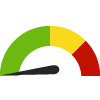



U.S. States
The distribution is based on data from 50 U.S. states and the District of Columbia.

US Value
(70.1%)
The regional value is compared to the national value.

Prior Value
(83.4%)
Prior Value compares a measured value with the previously measured value. Confidence intervals were not taken into account in determining the direction of the comparison.
State: Hawaii Adults who Feel Life is Slipping Out of Control
State: Hawaii Adults who Feel Life is Slipping Out of Control
24.7%
(2023)
Compared to:



US Value
(26.7%)
The regional value is compared to the national value.

Prior Value
(30.0%)
Prior Value compares a measured value with the previously measured value. Confidence intervals were not taken into account in determining the direction of the comparison.
State: Hawaii Adults Who Formerly Smoked Cigarettes
State: Hawaii Adults Who Formerly Smoked Cigarettes
25.7%
(2022)
Compared to:





Median Value for States and Territories
(24.9% in 2021)
The regional value is compared to the median value for states and territories.

Prior Value
(25.2%)
Prior Value compares a measured value with the previously measured value. Confidence intervals were taken into account in determining the direction of the comparison.

Trend
This comparison measures the indicator’s values over multiple time periods.<br>The Mann-Kendall Test for Statistical Significance is used to evaluate the trend<br>over 4 to 10 periods of measure, subject to data availability and comparability.

TPC Plan Target
(28.2%)
State: Hawaii Adults Who Get Insufficient Sleep
State: Hawaii Adults Who Get Insufficient Sleep
45.6%
(2022)
Compared to:




Prior Value
(39.4%)
Prior Value compares a measured value with the previously measured value. Confidence intervals were taken into account in determining the direction of the comparison.

Trend
This comparison measures the indicator’s values over multiple time periods.<br>The Mann-Kendall Test for Statistical Significance is used to evaluate the trend<br>over 4 to 10 periods of measure, subject to data availability and comparability.

HP 2030 Target
(31.4%)
<div>SH-03: Increase the proportion of adults who get enough sleep</div>
<div> </div>
<div>The national indicator is defined as adults who get an average of at least 7 hours of sleep. <span style="font-weight:400;">The data source for the national indicator is the National Health Interview Survey, from which state-level data for Hawaiʻi cannot be obtained. The state data source is the Behavioral Risk Factor Surveillance System, which is comparable to the national data source, but is the inverse, people who get fewer than 7 hours of sleep on average. The HP 2030 target has been adjusted accordingly.</span></div>
<div> </div>
State: Hawaii Adults with Good Physical and Mental Health
State: Hawaii Adults with Good Physical and Mental Health
50.3%
(2022)
Compared to:




Median Value for States and Territories
(49.6% in 2011)
The regional value is compared to the median value for states and territories.

Prior Value
(55.8%)
Prior Value compares a measured value with the previously measured value. Confidence intervals were taken into account in determining the direction of the comparison.

Trend
This comparison measures the indicator’s values over multiple time periods.<br>The Mann-Kendall Test for Statistical Significance is used to evaluate the trend<br>over 4 to 10 periods of measure, subject to data availability and comparability.
State: Hawaii Adults with Health Status of Good or Better
State: Hawaii Adults with Health Status of Good or Better
86.0%
(2022)
Compared to:





Median Value for States and Territories
(83.0%)
The regional value is compared to the median value for states and territories.

Prior Value
(87.8%)
Prior Value compares a measured value with the previously measured value. Confidence intervals were taken into account in determining the direction of the comparison.

Trend
This comparison measures the indicator’s values over multiple time periods.<br>The Mann-Kendall Test for Statistical Significance is used to evaluate the trend<br>over 4 to 10 periods of measure, subject to data availability and comparability.

PAN Plan Target
(97.7%)
State: Hawaii Adults with Medical Conditions Limiting Lifestyle
State: Hawaii Adults with Medical Conditions Limiting Lifestyle
33.2%
(2023)
Compared to:



US Value
(33.6%)
The regional value is compared to the national value.

Prior Value
(35.4%)
Prior Value compares a measured value with the previously measured value. Confidence intervals were not taken into account in determining the direction of the comparison.
State: Hawaii Self-Reported General Health Assessment: Good or Better
State: Hawaii Self-Reported General Health Assessment: Good or Better
87.7%
(2023)
Compared to:






U.S. States
The distribution is based on data from 50 U.S. states and the District of Columbia.

US Value
(85.4%)
The regional value is compared to the national value.

Prior Value
(88.3%)
Prior Value compares a measured value with the previously measured value. Confidence intervals were not taken into account in determining the direction of the comparison.

Trend
This comparison measures the indicator’s values over multiple time periods.<br>The Mann-Kendall Test for Statistical Significance is used to evaluate the trend<br>over 4 to 10 periods of measure, subject to data availability and comparability.

PAN Plan Target
(97.7%)
State: Hawaii
Health / Women's Health
Value
Compared to:
State: Hawaii Adults Who Visited an OB/GYN
State: Hawaii Adults Who Visited an OB/GYN
15.9%
(2023)
Compared to:




US Value
(15.7%)
The regional value is compared to the national value.

Prior Value
(14.9%)
Prior Value compares a measured value with the previously measured value. Confidence intervals were not taken into account in determining the direction of the comparison.

Trend
This comparison measures the indicator’s values over multiple time periods.<br>The Mann-Kendall Test for Statistical Significance is used to evaluate the trend<br>over 4 to 10 periods of measure, subject to data availability and comparability.
State: Hawaii
Community / Crime & Crime Prevention
Value
Compared to:
853
Arrests per 100,000 people aged 10-24 years
(2015)
Compared to:




US Value
(879 in 2013)
The regional value is compared to the U.S. value.

Prior Value
(894)
Prior Value compares a measured value with the previously measured value. Confidence intervals were not taken into account in determining the direction of the comparison.

Trend
This comparison measures the indicator’s values over multiple time periods.<br>The Mann-Kendall Test for Statistical Significance is used to evaluate the trend<br>over 4 to 10 periods of measure, subject to data availability and comparability.
193
Arrests per 100,000 people aged 10-24 years
(2015)
Compared to:




US Value
(235 in 2013)
The regional value is compared to the U.S. value.

Prior Value
(203)
Prior Value compares a measured value with the previously measured value. Confidence intervals were not taken into account in determining the direction of the comparison.

Trend
This comparison measures the indicator’s values over multiple time periods.<br>The Mann-Kendall Test for Statistical Significance is used to evaluate the trend<br>over 4 to 10 periods of measure, subject to data availability and comparability.
State: Hawaii Violent Crime Rate
State: Hawaii Violent Crime Rate
259
Crimes per 100,000 population
(2020)
Compared to:



Prior Value
(267)
Prior Value compares a measured value with the previously measured value. Confidence intervals were not taken into account in determining the direction of the comparison.

Trend
This comparison measures the indicator’s values over multiple time periods.<br>The Mann-Kendall Test for Statistical Significance is used to evaluate the trend<br>over 4 to 10 periods of measure, subject to data availability and comparability.
State: Hawaii
Community / Demographics
Value
Compared to:
State: Hawaii Average Household Size
State: Hawaii Average Household Size
2.90
Persons per household
(2018-2022)
Compared to:



US Value
(2.60)
The regional value is compared to the national value.

Trend
This comparison measures the indicator’s values over multiple time periods.<br>The Mann-Kendall Test for Statistical Significance is used to evaluate the trend<br>over 4 to 10 periods of measure, subject to data availability and comparability.
State: Hawaii Female Population
State: Hawaii Female Population
49.7%
(2022)
Compared to:




US Value
(50.4%)
The regional value is compared to the national value.

Prior Value
(49.6%)
Prior Value compares a measured value with the previously measured value. Confidence intervals were not taken into account in determining the direction of the comparison.

Trend
This comparison measures the indicator’s values over multiple time periods.<br>The Mann-Kendall Test for Statistical Significance is used to evaluate the trend<br>over 4 to 10 periods of measure, subject to data availability and comparability.
State: Hawaii Foreign Born Persons
State: Hawaii Foreign Born Persons
18.0%
(2018-2022)
Compared to:



US Value
(13.7%)
The regional value is compared to the national value.

Trend
This comparison measures the indicator’s values over multiple time periods.<br>The Mann-Kendall Test for Statistical Significance is used to evaluate the trend<br>over 4 to 10 periods of measure, subject to data availability and comparability.
State: Hawaii Households
State: Hawaii Households
483,906
Households
(2018-2022)
Compared to:


Trend
This comparison measures the indicator’s values over multiple time periods.<br>The Mann-Kendall Test for Statistical Significance is used to evaluate the trend<br>over 4 to 10 periods of measure, subject to data availability and comparability.
State: Hawaii Male Population
State: Hawaii Male Population
50.3%
(2022)
Compared to:




US Value
(49.6%)
The regional value is compared to the national value.

Prior Value
(50.4%)
Prior Value compares a measured value with the previously measured value. Confidence intervals were not taken into account in determining the direction of the comparison.

Trend
This comparison measures the indicator’s values over multiple time periods.<br>The Mann-Kendall Test for Statistical Significance is used to evaluate the trend<br>over 4 to 10 periods of measure, subject to data availability and comparability.
State: Hawaii Persons with Limited English Proficiency
State: Hawaii Persons with Limited English Proficiency
11.4%
Percent of population 5+
(2016-2020)
Compared to:




US Value
(8.2%)
The regional value is compared to the national value.

Prior Value
(11.9%)
Prior Value compares a measured value with the previously measured value. Confidence intervals were taken into account in determining the direction of the comparison.

Trend
This comparison measures the indicator’s values over multiple time periods.<br>The Mann-Kendall Test for Statistical Significance is used to evaluate the trend<br>over 4 to 10 periods of measure, subject to data availability and comparability.
25.7%
(2018-2022)
Compared to:



US Value
(21.7%)
The regional value is compared to the national value.

Trend
This comparison measures the indicator’s values over multiple time periods.<br>The Mann-Kendall Test for Statistical Significance is used to evaluate the trend<br>over 4 to 10 periods of measure, subject to data availability and comparability.
State: Hawaii Population American Indian and Alaska Native
State: Hawaii Population American Indian and Alaska Native
0.4%
(2022)
Compared to:




US Value
(1.3%)
The regional value is compared to the national value.

Prior Value
(0.4%)
Prior Value compares a measured value with the previously measured value. Confidence intervals were not taken into account in determining the direction of the comparison.

Trend
This comparison measures the indicator’s values over multiple time periods.<br>The Mann-Kendall Test for Statistical Significance is used to evaluate the trend<br>over 4 to 10 periods of measure, subject to data availability and comparability.
State: Hawaii Population Asian
State: Hawaii Population Asian
37.1%
(2022)
Compared to:




US Value
(6.3%)
The regional value is compared to the national value.

Prior Value
(37.2%)
Prior Value compares a measured value with the previously measured value. Confidence intervals were not taken into account in determining the direction of the comparison.

Trend
This comparison measures the indicator’s values over multiple time periods.<br>The Mann-Kendall Test for Statistical Significance is used to evaluate the trend<br>over 4 to 10 periods of measure, subject to data availability and comparability.
State: Hawaii Population Black or African American
State: Hawaii Population Black or African American
2.2%
(2022)
Compared to:




US Value
(13.6%)
The regional value is compared to the national value.

Prior Value
(2.2%)
Prior Value compares a measured value with the previously measured value. Confidence intervals were not taken into account in determining the direction of the comparison.

Trend
This comparison measures the indicator’s values over multiple time periods.<br>The Mann-Kendall Test for Statistical Significance is used to evaluate the trend<br>over 4 to 10 periods of measure, subject to data availability and comparability.
State: Hawaii Population Chinese
State: Hawaii Population Chinese
21.0%
(2014-2018)
Compared to:



US Value
(22.5%)
The regional value is compared to the national value.

Trend
This comparison measures the indicator’s values over multiple time periods.<br>The Mann-Kendall Test for Statistical Significance is used to evaluate the trend<br>over 4 to 10 periods of measure, subject to data availability and comparability.
State: Hawaii Population Filipino
State: Hawaii Population Filipino
37.6%
(2014-2018)
Compared to:



US Value
(18.2%)
The regional value is compared to the national value.

Trend
This comparison measures the indicator’s values over multiple time periods.<br>The Mann-Kendall Test for Statistical Significance is used to evaluate the trend<br>over 4 to 10 periods of measure, subject to data availability and comparability.
State: Hawaii Population Hispanic or Latino
State: Hawaii Population Hispanic or Latino
11.1%
(2022)
Compared to:




US Value
(19.1%)
The regional value is compared to the national value.

Prior Value
(11.0%)
Prior Value compares a measured value with the previously measured value. Confidence intervals were not taken into account in determining the direction of the comparison.

Trend
This comparison measures the indicator’s values over multiple time periods.<br>The Mann-Kendall Test for Statistical Significance is used to evaluate the trend<br>over 4 to 10 periods of measure, subject to data availability and comparability.
State: Hawaii Population Japanese
State: Hawaii Population Japanese
32.0%
(2014-2018)
Compared to:



US Value
(6.7%)
The regional value is compared to the national value.

Trend
This comparison measures the indicator’s values over multiple time periods.<br>The Mann-Kendall Test for Statistical Significance is used to evaluate the trend<br>over 4 to 10 periods of measure, subject to data availability and comparability.
State: Hawaii Population Korean
State: Hawaii Population Korean
5.2%
(2014-2018)
Compared to:



US Value
(8.5%)
The regional value is compared to the national value.

Trend
This comparison measures the indicator’s values over multiple time periods.<br>The Mann-Kendall Test for Statistical Significance is used to evaluate the trend<br>over 4 to 10 periods of measure, subject to data availability and comparability.
State: Hawaii Population Native Hawaiian and Other Pacific Islander
State: Hawaii Population Native Hawaiian and Other Pacific Islander
10.3%
(2022)
Compared to:




US Value
(0.3%)
The regional value is compared to the national value.

Prior Value
(10.4%)
Prior Value compares a measured value with the previously measured value. Confidence intervals were not taken into account in determining the direction of the comparison.

Trend
This comparison measures the indicator’s values over multiple time periods.<br>The Mann-Kendall Test for Statistical Significance is used to evaluate the trend<br>over 4 to 10 periods of measure, subject to data availability and comparability.
State: Hawaii Population Over Age 65
State: Hawaii Population Over Age 65
20.4%
(2022)
Compared to:




US Value
(17.3%)
The regional value is compared to the national value.

Prior Value
(19.9%)
Prior Value compares a measured value with the previously measured value. Confidence intervals were not taken into account in determining the direction of the comparison.

Trend
This comparison measures the indicator’s values over multiple time periods.<br>The Mann-Kendall Test for Statistical Significance is used to evaluate the trend<br>over 4 to 10 periods of measure, subject to data availability and comparability.
State: Hawaii Population Over Age 65 (Count)
State: Hawaii Population Over Age 65 (Count)
279,708
People
(2018-2022)
Compared to:


Trend
This comparison measures the indicator’s values over multiple time periods.<br>The Mann-Kendall Test for Statistical Significance is used to evaluate the trend<br>over 4 to 10 periods of measure, subject to data availability and comparability.
State: Hawaii Population Two or More Races
State: Hawaii Population Two or More Races
24.7%
(2022)
Compared to:




US Value
(3.0%)
The regional value is compared to the national value.

Prior Value
(24.7%)
Prior Value compares a measured value with the previously measured value. Confidence intervals were not taken into account in determining the direction of the comparison.

Trend
This comparison measures the indicator’s values over multiple time periods.<br>The Mann-Kendall Test for Statistical Significance is used to evaluate the trend<br>over 4 to 10 periods of measure, subject to data availability and comparability.
State: Hawaii Population Under Age 18
State: Hawaii Population Under Age 18
20.6%
(2022)
Compared to:




US Value
(21.7%)
The regional value is compared to the national value.

Prior Value
(20.8%)
Prior Value compares a measured value with the previously measured value. Confidence intervals were not taken into account in determining the direction of the comparison.

Trend
This comparison measures the indicator’s values over multiple time periods.<br>The Mann-Kendall Test for Statistical Significance is used to evaluate the trend<br>over 4 to 10 periods of measure, subject to data availability and comparability.
State: Hawaii Population Under Age 5
State: Hawaii Population Under Age 5
5.5%
(2022)
Compared to:




US Value
(5.6%)
The regional value is compared to the national value.

Prior Value
(5.7%)
Prior Value compares a measured value with the previously measured value. Confidence intervals were not taken into account in determining the direction of the comparison.

Trend
This comparison measures the indicator’s values over multiple time periods.<br>The Mann-Kendall Test for Statistical Significance is used to evaluate the trend<br>over 4 to 10 periods of measure, subject to data availability and comparability.
State: Hawaii Population White
State: Hawaii Population White
25.2%
(2022)
Compared to:




US Value
(75.5%)
The regional value is compared to the national value.

Prior Value
(25.2%)
Prior Value compares a measured value with the previously measured value. Confidence intervals were not taken into account in determining the direction of the comparison.

Trend
This comparison measures the indicator’s values over multiple time periods.<br>The Mann-Kendall Test for Statistical Significance is used to evaluate the trend<br>over 4 to 10 periods of measure, subject to data availability and comparability.
State: Hawaii Population White (Not Hispanic or Latino)
State: Hawaii Population White (Not Hispanic or Latino)
21.3%
(2022)
Compared to:




US Value
(58.9%)
The regional value is compared to the national value.

Prior Value
(21.3%)
Prior Value compares a measured value with the previously measured value. Confidence intervals were not taken into account in determining the direction of the comparison.

Trend
This comparison measures the indicator’s values over multiple time periods.<br>The Mann-Kendall Test for Statistical Significance is used to evaluate the trend<br>over 4 to 10 periods of measure, subject to data availability and comparability.
State: Hawaii Sexual Minority Adults
State: Hawaii Sexual Minority Adults
6.1%
(2022)
Compared to:



Prior Value
(6.4%)
Prior Value compares a measured value with the previously measured value. Confidence intervals were taken into account in determining the direction of the comparison.

Trend
This comparison measures the indicator’s values over multiple time periods.<br>The Mann-Kendall Test for Statistical Significance is used to evaluate the trend<br>over 4 to 10 periods of measure, subject to data availability and comparability.
State: Hawaii Sexual or Gender Minority Adults
State: Hawaii Sexual or Gender Minority Adults
6.4%
(2022)
Compared to:



Prior Value
(6.8%)
Prior Value compares a measured value with the previously measured value. Confidence intervals were taken into account in determining the direction of the comparison.

Trend
This comparison measures the indicator’s values over multiple time periods.<br>The Mann-Kendall Test for Statistical Significance is used to evaluate the trend<br>over 4 to 10 periods of measure, subject to data availability and comparability.
State: Hawaii Total Population
State: Hawaii Total Population
1,435,138
People
(2023)
Compared to:



Prior Value
(1,439,399)
Prior Value compares a measured value with the previously measured value. Confidence intervals were not taken into account in determining the direction of the comparison.

Trend
This comparison measures the indicator’s values over multiple time periods.<br>The Mann-Kendall Test for Statistical Significance is used to evaluate the trend<br>over 4 to 10 periods of measure, subject to data availability and comparability.
State: Hawaii Veteran Population
State: Hawaii Veteran Population
8.5%
(2018-2022)
Compared to:



US Value
(6.6%)
The regional value is compared to the national value.

Trend
This comparison measures the indicator’s values over multiple time periods.<br>The Mann-Kendall Test for Statistical Significance is used to evaluate the trend<br>over 4 to 10 periods of measure, subject to data availability and comparability.
State: Hawaii
Community / Governance
Value
Compared to:
State: Hawaii Statewide Policies that Increase Access to Healthy Food
State: Hawaii Statewide Policies that Increase Access to Healthy Food
3
Policies
(2018)
Compared to:




Prior Value
(3)
Prior Value compares a measured value with the previously measured value. Confidence intervals were not taken into account in determining the direction of the comparison.

Trend
This comparison measures the indicator’s values over multiple time periods.<br>The Mann-Kendall Test for Statistical Significance is used to evaluate the trend<br>over 4 to 10 periods of measure, subject to data availability and comparability.

PAN Plan Target
(2)
State: Hawaii
Community / Public Safety
Value
Compared to:
State: Hawaii Alcohol-Impaired Driving Deaths
State: Hawaii Alcohol-Impaired Driving Deaths
33.5%
Percent of driving deaths with alcohol involvement
(2017-2021)
Compared to:
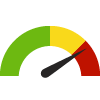




U.S. States
The distribution is based on data from 50 U.S. states and the District of Columbia.

US Value
(26.3%)
The regional value is compared to the national value.

Prior Value
(31.5%)
Prior Value compares a measured value with the previously measured value. Confidence intervals were taken into account in determining the direction of the comparison.

Trend
This comparison measures the indicator’s values over multiple time periods.<br>The Mann-Kendall Test for Statistical Significance is used to evaluate the trend<br>over 4 to 10 periods of measure, subject to data availability and comparability.
State: Hawaii Motor Vehicle Collision Death Rate
State: Hawaii Motor Vehicle Collision Death Rate
5.9
Deaths per 100,000 population
(2020-2022)
Compared to:





US Value
(13.8 in 2021)
The regional value is compared to the national value.

Prior Value
(6.2)
Prior Value compares a measured value with the previously measured value. Confidence intervals were taken into account in determining the direction of the comparison.

Trend
This comparison measures the indicator’s values over multiple time periods.<br>The Mann-Kendall Test for Statistical Significance is used to evaluate the trend<br>over 4 to 10 periods of measure, subject to data availability and comparability.

HP 2030 Target
(10.1)
<div>
<div>IVP-06: Reduce deaths from motor vehicle crashes</div>
<div> </div>
<p>The national indicator definition and data source are the same as for the state.</p>
</div>
State: Hawaii Motor Vehicle-Related Hospitalization Rate
State: Hawaii Motor Vehicle-Related Hospitalization Rate
40.6
Hospitalizations per 100,000 population
(2019)
Compared to:



Prior Value
(38.0)
Prior Value compares a measured value with the previously measured value. Confidence intervals were not taken into account in determining the direction of the comparison.

Trend
This comparison measures the indicator’s values over multiple time periods.<br>The Mann-Kendall Test for Statistical Significance is used to evaluate the trend<br>over 4 to 10 periods of measure, subject to data availability and comparability.
State: Hawaii Pedalcyclist Death Rate
State: Hawaii Pedalcyclist Death Rate
0.13
Deaths per 100,000 population
(2015)
Compared to:



Prior Value
(0.28)
Prior Value compares a measured value with the previously measured value. Confidence intervals were not taken into account in determining the direction of the comparison.

Trend
This comparison measures the indicator’s values over multiple time periods.<br>The Mann-Kendall Test for Statistical Significance is used to evaluate the trend<br>over 4 to 10 periods of measure, subject to data availability and comparability.
State: Hawaii
Community / Social Environment
Value
Compared to:
State: Hawaii Children 0-5 with More Than 1 Hour of TV/Screen Time
State: Hawaii Children 0-5 with More Than 1 Hour of TV/Screen Time
68.9%
(2020-2021)
Compared to:




US Value
(67.9%)
The regional value is compared to the national value.

Prior Value
(50.8%)
Prior Value compares a measured value with the previously measured value. Confidence intervals were not taken into account in determining the direction of the comparison.

PAN Plan Target
(62.7%)
State: Hawaii Children 6-11 with More Than 1 Hour of TV/Screen Time
State: Hawaii Children 6-11 with More Than 1 Hour of TV/Screen Time
93.2%
(2020-2021)
Compared to:



US Value
(92.4%)
The regional value is compared to the national value.

Prior Value
(77.0%)
Prior Value compares a measured value with the previously measured value. Confidence intervals were not taken into account in determining the direction of the comparison.
State: Hawaii Children in Single-Parent Households
State: Hawaii Children in Single-Parent Households
21.8%
(2018-2022)
Compared to:
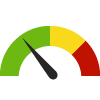



U.S. States
The distribution is based on data from 50 U.S. states and the District of Columbia.

US Value
(24.9%)
The regional value is compared to the national value.

Trend
This comparison measures the indicator’s values over multiple time periods.<br>The Mann-Kendall Test for Statistical Significance is used to evaluate the trend<br>over 4 to 10 periods of measure, subject to data availability and comparability.
State: Hawaii Internet Usage
State: Hawaii Internet Usage
90.4%
(2022)
Compared to:




Median Value for States and Territories
(85.0% in 2017)
The regional value is compared to the median value for states and territories.

Prior Value
(83.7%)
Prior Value compares a measured value with the previously measured value. Confidence intervals were taken into account in determining the direction of the comparison.

Trend
This comparison measures the indicator’s values over multiple time periods.<br>The Mann-Kendall Test for Statistical Significance is used to evaluate the trend<br>over 4 to 10 periods of measure, subject to data availability and comparability.
State: Hawaii Linguistic Isolation
State: Hawaii Linguistic Isolation
5.5%
(2018-2022)
Compared to:
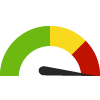



U.S. States
The distribution is based on data from 50 U.S. states and the District of Columbia.

US Value
(4.2%)
The regional value is compared to the national value.

Trend
This comparison measures the indicator’s values over multiple time periods.<br>The Mann-Kendall Test for Statistical Significance is used to evaluate the trend<br>over 4 to 10 periods of measure, subject to data availability and comparability.
State: Hawaii Parents Who Read to Their Children Aged 0-5
State: Hawaii Parents Who Read to Their Children Aged 0-5
44.8%
(2020-2021)
Compared to:




US Value
(38.6%)
The regional value is compared to the national value.

Prior Value
(46.0%)
Prior Value compares a measured value with the previously measured value. Confidence intervals were taken into account in determining the direction of the comparison.

Trend
This comparison measures the indicator’s values over multiple time periods.<br>The Mann-Kendall Test for Statistical Significance is used to evaluate the trend<br>over 4 to 10 periods of measure, subject to data availability and comparability.
State: Hawaii People 65+ Living Alone (Count)
State: Hawaii People 65+ Living Alone (Count)
53,291
People
(2018-2022)
Compared to:


Trend
This comparison measures the indicator’s values over multiple time periods.<br>The Mann-Kendall Test for Statistical Significance is used to evaluate the trend<br>over 4 to 10 periods of measure, subject to data availability and comparability.
State: Hawaii Social Associations
State: Hawaii Social Associations
6.5
Membership associations per 10,000 population
(2021)
Compared to:





U.S. States
The distribution is based on data from 50 U.S. states and the District of Columbia.

US Value
(9.1)
The regional value is compared to the national value.

Prior Value
(6.7)
Prior Value compares a measured value with the previously measured value. Confidence intervals were not taken into account in determining the direction of the comparison.

Trend
This comparison measures the indicator’s values over multiple time periods.<br>The Mann-Kendall Test for Statistical Significance is used to evaluate the trend<br>over 4 to 10 periods of measure, subject to data availability and comparability.
State: Hawaii Teens with an Adult They Can Talk To
State: Hawaii Teens with an Adult They Can Talk To
73.5%
(2021)
Compared to:




Prior Value
(79.0%)
Prior Value compares a measured value with the previously measured value. Confidence intervals were taken into account in determining the direction of the comparison.

Trend
This comparison measures the indicator’s values over multiple time periods.<br>The Mann-Kendall Test for Statistical Significance is used to evaluate the trend<br>over 4 to 10 periods of measure, subject to data availability and comparability.

HP 2030 Target
(82.9%)
<div><span>AH-03: Increase the proportion of adolescents who have an adult they can talk to about serious problems<br /> <br />The national indicator includes adolescents aged 12-17. The national data source is the National Survey on Drug Use and Health. The state data source is the Youth Risk Behavior Survey, which is comparable to the national data source. It is divided into two groups: grades 6-8 and grades 9-12. This indicator reports data for students in grades 9-12, while the indicator 'Young Teens with an Adult They Can Talk To' reports for those in grades 6-8.</span></div>
State: Hawaii Young Teens with an Adult They Can Talk To
State: Hawaii Young Teens with an Adult They Can Talk To
74.6%
(2021)
Compared to:




Prior Value
(79.8%)
Prior Value compares a measured value with the previously measured value. Confidence intervals were taken into account in determining the direction of the comparison.

Trend
This comparison measures the indicator’s values over multiple time periods.<br>The Mann-Kendall Test for Statistical Significance is used to evaluate the trend<br>over 4 to 10 periods of measure, subject to data availability and comparability.

HP 2030 Target
(82.9%)
<div><span>AH-03: Increase the proportion of adolescents who have an adult they can talk to about serious problems<br /> <br />The national indicator includes adolescents aged 12-17. The national data source is the National Survey on Drug Use and Health. The state data source is the Youth Risk Behavior Survey, which is comparable to the national data source. It is divided into two groups: grades 6-8 and grades 9-12. This indicator reports data for students in grades 6-8, while the indicator 'Teens with an Adult They Can Talk To' reports for those in grades 9-12.</span></div>
State: Hawaii
Community / Transportation
Value
Compared to:
State: Hawaii Community Spending on Transportation
State: Hawaii Community Spending on Transportation
17.4%
(2023)
Compared to:



US Value
(17.4%)
The regional value is compared to the national value.

Prior Value
(17.4%)
Prior Value compares a measured value with the previously measured value. Confidence intervals were not taken into account in determining the direction of the comparison.
State: Hawaii Gasoline and Other Fuels Spending-to-Income Ratio
State: Hawaii Gasoline and Other Fuels Spending-to-Income Ratio
2.8%
(2023)
Compared to:
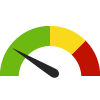


U.S. States
The distribution is based on data from 50 U.S. states and the District of Columbia.

Prior Value
(2.8%)
Prior Value compares a measured value with the previously measured value. Confidence intervals were not taken into account in determining the direction of the comparison.
State: Hawaii Mean Travel Time to Work
State: Hawaii Mean Travel Time to Work
26.6
Minutes
(2018-2022)
Compared to:
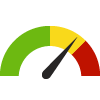



U.S. States
The distribution is based on data from 50 U.S. states and the District of Columbia.

US Value
(26.7)
The regional value is compared to the national value.

Trend
This comparison measures the indicator’s values over multiple time periods.<br>The Mann-Kendall Test for Statistical Significance is used to evaluate the trend<br>over 4 to 10 periods of measure, subject to data availability and comparability.
State: Hawaii Solo Drivers with a Long Commute
State: Hawaii Solo Drivers with a Long Commute
40.7%
(2018-2022)
Compared to:





U.S. States
The distribution is based on data from 50 U.S. states and the District of Columbia.

US Value
(36.4%)
The regional value is compared to the national value.

Prior Value
(40.7%)
Prior Value compares a measured value with the previously measured value. Confidence intervals were taken into account in determining the direction of the comparison.

Trend
This comparison measures the indicator’s values over multiple time periods.<br>The Mann-Kendall Test for Statistical Significance is used to evaluate the trend<br>over 4 to 10 periods of measure, subject to data availability and comparability.
State: Hawaii Workers Commuting by Active Transportation
State: Hawaii Workers Commuting by Active Transportation
10.1%
(2016-2020)
Compared to:





US Value
(7.2%)
The regional value is compared to the national value.

Prior Value
(10.7%)
Prior Value compares a measured value with the previously measured value. Confidence intervals were taken into account in determining the direction of the comparison.

Trend
This comparison measures the indicator’s values over multiple time periods.<br>The Mann-Kendall Test for Statistical Significance is used to evaluate the trend<br>over 4 to 10 periods of measure, subject to data availability and comparability.

PAN Plan Target
(11.1%)
State: Hawaii Workers Commuting by Bicycling
State: Hawaii Workers Commuting by Bicycling
0.8%
(2016-2020)
Compared to:





US Value
(0.5%)
The regional value is compared to the national value.

Prior Value
(0.8%)
Prior Value compares a measured value with the previously measured value. Confidence intervals were taken into account in determining the direction of the comparison.

Trend
This comparison measures the indicator’s values over multiple time periods.<br>The Mann-Kendall Test for Statistical Significance is used to evaluate the trend<br>over 4 to 10 periods of measure, subject to data availability and comparability.

PAN Plan Target
(0.9%)
State: Hawaii Workers Commuting by Public Transportation
State: Hawaii Workers Commuting by Public Transportation
4.3%
(2018-2022)
Compared to:






U.S. States
The distribution is based on data from 50 U.S. states and the District of Columbia.

US Value
(3.8%)
The regional value is compared to the national value.

Trend
This comparison measures the indicator’s values over multiple time periods.<br>The Mann-Kendall Test for Statistical Significance is used to evaluate the trend<br>over 4 to 10 periods of measure, subject to data availability and comparability.

HP 2030 Target
(5.3%)
<div>
<div>EH-02: Increase trips to work made by mass transit</div>
<div> </div>
<div>The national indicator definition and data source are the same as for the state.</div>
</div>

PAN Plan Target
(5.3%)
State: Hawaii Workers Commuting by Walking
State: Hawaii Workers Commuting by Walking
4.2%
(2018-2022)
Compared to:





U.S. States
The distribution is based on data from 50 U.S. states and the District of Columbia.

US Value
(2.4%)
The regional value is compared to the national value.

Trend
This comparison measures the indicator’s values over multiple time periods.<br>The Mann-Kendall Test for Statistical Significance is used to evaluate the trend<br>over 4 to 10 periods of measure, subject to data availability and comparability.

PAN Plan Target
(4.8%)
State: Hawaii
Economy / Employment
Value
Compared to:
State: Hawaii Adults Who Are Employed
State: Hawaii Adults Who Are Employed
73.1%
(2017-2018)
Compared to:




US Value
(72.0%)
The regional value is compared to the national value.

Prior Value
(72.0%)
Prior Value compares a measured value with the previously measured value. Confidence intervals were not taken into account in determining the direction of the comparison.

HP 2030 LHI
(75.0%)
<div><span>SDOH-02: Increase employment in working-age people <strong>(LEADING HEALTH INDICATOR)</strong><br /><br />The national indicator definition includes persons aged 16-64. The data source is the same as for the state.</span></div>
State: Hawaii Employer Establishments
State: Hawaii Employer Establishments
32,627
Number of Establishments
(2020)
Compared to:



Prior Value
(32,889)
Prior Value compares a measured value with the previously measured value. Confidence intervals were not taken into account in determining the direction of the comparison.

Trend
This comparison measures the indicator’s values over multiple time periods.<br>The Mann-Kendall Test for Statistical Significance is used to evaluate the trend<br>over 4 to 10 periods of measure, subject to data availability and comparability.
State: Hawaii Female Population 16+ in Civilian Labor Force
State: Hawaii Female Population 16+ in Civilian Labor Force
59.0%
(2018-2022)
Compared to:
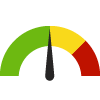



U.S. States
The distribution is based on data from 50 U.S. states and the District of Columbia.

US Value
(58.5%)
The regional value is compared to the national value.

Trend
This comparison measures the indicator’s values over multiple time periods.<br>The Mann-Kendall Test for Statistical Significance is used to evaluate the trend<br>over 4 to 10 periods of measure, subject to data availability and comparability.
State: Hawaii Population 16+ in Civilian Labor Force
State: Hawaii Population 16+ in Civilian Labor Force
57.4%
(2018-2022)
Compared to:




U.S. States
The distribution is based on data from 50 U.S. states and the District of Columbia.

US Value
(59.6%)
The regional value is compared to the national value.

Trend
This comparison measures the indicator’s values over multiple time periods.<br>The Mann-Kendall Test for Statistical Significance is used to evaluate the trend<br>over 4 to 10 periods of measure, subject to data availability and comparability.
State: Hawaii Size of Labor Force
State: Hawaii Size of Labor Force
671,775
Persons
(January 2024)
Compared to:



Prior Value
(672,910)
Prior Value compares a measured value with the previously measured value. Confidence intervals were not taken into account in determining the direction of the comparison.

Trend
This comparison measures the indicator’s values over multiple time periods.<br>The Mann-Kendall Test for Statistical Significance is used to evaluate the trend<br>over 4 to 10 periods of measure, subject to data availability and comparability.
State: Hawaii Total Employment
State: Hawaii Total Employment
469,179
Paid Employees
(2021)
Compared to:



Prior Value
(549,375)
Prior Value compares a measured value with the previously measured value. Confidence intervals were not taken into account in determining the direction of the comparison.

Trend
This comparison measures the indicator’s values over multiple time periods.<br>The Mann-Kendall Test for Statistical Significance is used to evaluate the trend<br>over 4 to 10 periods of measure, subject to data availability and comparability.
State: Hawaii Total Employment Change
State: Hawaii Total Employment Change
-14.6%
(2020-2021)
Compared to:





U.S. States
The distribution is based on data from 50 U.S. states and the District of Columbia.

US Value
(-4.3%)
The regional value is compared to the national value.

Prior Value
(-0.7%)
Prior Value compares a measured value with the previously measured value. Confidence intervals were not taken into account in determining the direction of the comparison.

Trend
This comparison measures the indicator’s values over multiple time periods.<br>The Mann-Kendall Test for Statistical Significance is used to evaluate the trend<br>over 4 to 10 periods of measure, subject to data availability and comparability.
State: Hawaii Unemployed Workers in Civilian Labor Force
State: Hawaii Unemployed Workers in Civilian Labor Force
3.1%
(January 2024)
Compared to:





U.S. States
The distribution is based on non-seasonally-adjusted data from 50 U.S. states and the District of Columbia.

US Value
(4.1%)
The regional value is compared to the national value.

Prior Value
(2.9%)
Prior Value compares a measured value with the previously measured value. Confidence intervals were not taken into account in determining the direction of the comparison.

Trend
This comparison measures the indicator’s values over multiple time periods.<br>The Mann-Kendall Test for Statistical Significance is used to evaluate the trend<br>over 4 to 10 periods of measure, subject to data availability and comparability.
State: Hawaii Unemployed Workers in Civilian Labor Force: 25-64
State: Hawaii Unemployed Workers in Civilian Labor Force: 25-64
3.8%
(2014-2018)
Compared to:



US Value
(4.8%)
The regional value is compared to the national value.

Trend
This comparison measures the indicator’s values over multiple time periods.<br>The Mann-Kendall Test for Statistical Significance is used to evaluate the trend<br>over 4 to 10 periods of measure, subject to data availability and comparability.
State: Hawaii
Economy / Food Insecurity
Value
Compared to:
State: Hawaii Adults Who Receive Food Stamps or SNAP
State: Hawaii Adults Who Receive Food Stamps or SNAP
14.2%
(2022)
Compared to:




Prior Value
(14.4%)
Prior Value compares a measured value with the previously measured value. Confidence intervals were taken into account in determining the direction of the comparison.

Trend
This comparison measures the indicator’s values over multiple time periods.<br>The Mann-Kendall Test for Statistical Significance is used to evaluate the trend<br>over 4 to 10 periods of measure, subject to data availability and comparability.

PAN Plan Target
(15.7%)
State: Hawaii Adults Who Receive Free Food
State: Hawaii Adults Who Receive Free Food
11.8%
(2021)
Compared to:




Prior Value
(9.5%)
Prior Value compares a measured value with the previously measured value. Confidence intervals were taken into account in determining the direction of the comparison.

Trend
This comparison measures the indicator’s values over multiple time periods.<br>The Mann-Kendall Test for Statistical Significance is used to evaluate the trend<br>over 4 to 10 periods of measure, subject to data availability and comparability.

PAN Plan Target
(12.9%)
State: Hawaii Adults Who Report Food Scarcity
State: Hawaii Adults Who Report Food Scarcity
13.1%
(2021)
Compared to:



Prior Value
(22.7%)
Prior Value compares a measured value with the previously measured value. Confidence intervals were taken into account in determining the direction of the comparison.

PAN Plan Target
(11.9%)
State: Hawaii Child Food Insecurity Rate
State: Hawaii Child Food Insecurity Rate
17.8%
(2021)
Compared to:





U.S. States
The distribution is based on data from 50 U.S. states and the District of Columbia.

US Value
(12.8%)
The regional value is compared to the national value.

Prior Value
(16.6%)
Prior Value compares a measured value with the previously measured value. Confidence intervals were not taken into account in determining the direction of the comparison.

Trend
This comparison measures the indicator’s values over multiple time periods.<br>The Mann-Kendall Test for Statistical Significance is used to evaluate the trend<br>over 4 to 10 periods of measure, subject to data availability and comparability.
State: Hawaii Community Spending on Food
State: Hawaii Community Spending on Food
12.9%
(2023)
Compared to:



US Value
(12.6%)
The regional value is compared to the national value.

Prior Value
(12.9%)
Prior Value compares a measured value with the previously measured value. Confidence intervals were not taken into account in determining the direction of the comparison.
State: Hawaii Food Insecure Children Likely Ineligible for Assistance
State: Hawaii Food Insecure Children Likely Ineligible for Assistance
49%
(2021)
Compared to:





U.S. States
The distribution is based on data from 50 U.S. states and the District of Columbia.

US Value
(25%)
The regional value is compared to the national value.

Prior Value
(44%)
Prior Value compares a measured value with the previously measured value. Confidence intervals were not taken into account in determining the direction of the comparison.

Trend
This comparison measures the indicator’s values over multiple time periods.<br>The Mann-Kendall Test for Statistical Significance is used to evaluate the trend<br>over 4 to 10 periods of measure, subject to data availability and comparability.
State: Hawaii Food Insecurity Rate
State: Hawaii Food Insecurity Rate
11.9%
(2021)
Compared to:





U.S. States
The distribution is based on data from 50 U.S. states and the District of Columbia.

US Value
(10.4%)
The regional value is compared to the national value.

Prior Value
(9.6%)
Prior Value compares a measured value with the previously measured value. Confidence intervals were not taken into account in determining the direction of the comparison.

Trend
This comparison measures the indicator’s values over multiple time periods.<br>The Mann-Kendall Test for Statistical Significance is used to evaluate the trend<br>over 4 to 10 periods of measure, subject to data availability and comparability.
State: Hawaii Households Receiving SNAP
State: Hawaii Households Receiving SNAP
10.7%
(2016-2020)
Compared to:




US Value
(11.4%)
The regional value is compared to the national value.

Prior Value
(10.8%)
Prior Value compares a measured value with the previously measured value. Confidence intervals were taken into account in determining the direction of the comparison.

Trend
This comparison measures the indicator’s values over multiple time periods.<br>The Mann-Kendall Test for Statistical Significance is used to evaluate the trend<br>over 4 to 10 periods of measure, subject to data availability and comparability.
State: Hawaii Households Receiving SNAP with Children
State: Hawaii Households Receiving SNAP with Children
50.0%
(2018-2022)
Compared to:



US Value
(47.9%)
The regional value is compared to the national value.

Trend
This comparison measures the indicator’s values over multiple time periods.<br>The Mann-Kendall Test for Statistical Significance is used to evaluate the trend<br>over 4 to 10 periods of measure, subject to data availability and comparability.
State: Hawaii Households Receiving SNAP with Children (Count)
State: Hawaii Households Receiving SNAP with Children (Count)
26,473
Households
(2018-2022)
Compared to:


Trend
This comparison measures the indicator’s values over multiple time periods.<br>The Mann-Kendall Test for Statistical Significance is used to evaluate the trend<br>over 4 to 10 periods of measure, subject to data availability and comparability.
State: Hawaii Households that Are Food Insecure
State: Hawaii Households that Are Food Insecure
9.0%
(2019-2021)
Compared to:






US Value
(10.4%)
The regional value is compared to the national value.

Prior Value
(9.0%)
Prior Value compares a measured value with the previously measured value. Confidence intervals were taken into account in determining the direction of the comparison.

Trend
This comparison measures the indicator’s values over multiple time periods.<br>The Mann-Kendall Test for Statistical Significance is used to evaluate the trend<br>over 4 to 10 periods of measure, subject to data availability and comparability.

HP 2030 LHI
(6.0%)
<div><span>NWS-01: Reduce household food insecurity and hunger <strong>(LEADING HEALTH INDICATOR)</strong><br /> <br />The national indicator definition and data source are the same as for the state.</span></div>

PAN Plan Target
(6.0%)
State: Hawaii Projected Child Food Insecurity Rate
State: Hawaii Projected Child Food Insecurity Rate
24.6%
(2021)
Compared to:


U.S. States
The distribution is based on data from 50 U.S. states and the District of Columbia.
State: Hawaii Projected Food Insecurity Rate
State: Hawaii Projected Food Insecurity Rate
15.1%
(2021)
Compared to:


U.S. States
The distribution is based on data from 50 U.S. states and the District of Columbia.
State: Hawaii Students Eligible for the Free Lunch Program
State: Hawaii Students Eligible for the Free Lunch Program
36.7%
(2022-2023)
Compared to:
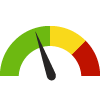




U.S. States
The distribution is based on data from 43 U.S. states.

US Value
(42.8%)
The regional value is compared to the national value.

Prior Value
(39.5%)
Prior Value compares a measured value with the previously measured value. Confidence intervals were not taken into account in determining the direction of the comparison.

Trend
This comparison measures the indicator’s values over multiple time periods.<br>The Mann-Kendall Test for Statistical Significance is used to evaluate the trend<br>over 4 to 10 periods of measure, subject to data availability and comparability.
State: Hawaii Teens Who Went Hungry
State: Hawaii Teens Who Went Hungry
5.0%
(2021)
Compared to:




Prior Value
(6.6%)
Prior Value compares a measured value with the previously measured value. Confidence intervals were taken into account in determining the direction of the comparison.

Trend
This comparison measures the indicator’s values over multiple time periods.<br>The Mann-Kendall Test for Statistical Significance is used to evaluate the trend<br>over 4 to 10 periods of measure, subject to data availability and comparability.

PAN Plan Target
(4.6%)
State: Hawaii Young Teens Who Went Hungry
State: Hawaii Young Teens Who Went Hungry
5.4%
(2021)
Compared to:




Prior Value
(7.4%)
Prior Value compares a measured value with the previously measured value. Confidence intervals were taken into account in determining the direction of the comparison.

Trend
This comparison measures the indicator’s values over multiple time periods.<br>The Mann-Kendall Test for Statistical Significance is used to evaluate the trend<br>over 4 to 10 periods of measure, subject to data availability and comparability.

PAN Plan Target
(4.9%)
State: Hawaii
Economy / Government Assistance
Value
Compared to:
State: Hawaii Households with Cash Public Assistance Income
State: Hawaii Households with Cash Public Assistance Income
4.0%
(2018-2022)
Compared to:




U.S. States
The distribution is based on data from 50 U.S. states and the District of Columbia.

US Value
(2.7%)
The regional value is compared to the national value.

Trend
This comparison measures the indicator’s values over multiple time periods.<br>The Mann-Kendall Test for Statistical Significance is used to evaluate the trend<br>over 4 to 10 periods of measure, subject to data availability and comparability.
State: Hawaii Households with Children Receiving Assistance
State: Hawaii Households with Children Receiving Assistance
25.3%
(2014-2018)
Compared to:



US Value
(26.3%)
The regional value is compared to the national value.

Trend
This comparison measures the indicator’s values over multiple time periods.<br>The Mann-Kendall Test for Statistical Significance is used to evaluate the trend<br>over 4 to 10 periods of measure, subject to data availability and comparability.
State: Hawaii
Economy / Housing & Homes
Value
Compared to:
State: Hawaii Community Spending on Housing
State: Hawaii Community Spending on Housing
33.4%
(2023)
Compared to:



US Value
(32.1%)
The regional value is compared to the national value.

Prior Value
(33.5%)
Prior Value compares a measured value with the previously measured value. Confidence intervals were not taken into account in determining the direction of the comparison.
State: Hawaii High Housing Burden
State: Hawaii High Housing Burden
39.0%
Percent of households
(2016-2020)
Compared to:




US Value
(31.3%)
The regional value is compared to the national value.

Prior Value
(39.5%)
Prior Value compares a measured value with the previously measured value. Confidence intervals were not taken into account in determining the direction of the comparison.

Trend
This comparison measures the indicator’s values over multiple time periods.<br>The Mann-Kendall Test for Statistical Significance is used to evaluate the trend<br>over 4 to 10 periods of measure, subject to data availability and comparability.
State: Hawaii Home Renter Spending-to-Income Ratio
State: Hawaii Home Renter Spending-to-Income Ratio
18.0%
(2023)
Compared to:



U.S. States
The distribution is based on data from 50 U.S. states and the District of Columbia.

Prior Value
(18.1%)
Prior Value compares a measured value with the previously measured value. Confidence intervals were not taken into account in determining the direction of the comparison.
State: Hawaii Homelessness Rate
State: Hawaii Homelessness Rate
43.2
Per 10,000 population
(2023)
Compared to:




US Value
(17.5 in 2022)
The regional value is compared to the national value.

Prior Value
(41.3)
Prior Value compares a measured value with the previously measured value. Confidence intervals were not taken into account in determining the direction of the comparison.

Trend
This comparison measures the indicator’s values over multiple time periods.<br>The Mann-Kendall Test for Statistical Significance is used to evaluate the trend<br>over 4 to 10 periods of measure, subject to data availability and comparability.
State: Hawaii Homeowner Spending-to-Income Ratio
State: Hawaii Homeowner Spending-to-Income Ratio
12.2%
(2023)
Compared to:



U.S. States
The distribution is based on data from 50 U.S. states and the District of Columbia.

Prior Value
(12.1%)
Prior Value compares a measured value with the previously measured value. Confidence intervals were not taken into account in determining the direction of the comparison.
State: Hawaii Homeowner Vacancy Rate
State: Hawaii Homeowner Vacancy Rate
1.2%
(2018-2022)
Compared to:




U.S. States
The distribution is based on data from 50 U.S. states and the District of Columbia.

US Value
(1.1%)
The regional value is compared to the national value.

Trend
This comparison measures the indicator’s values over multiple time periods.<br>The Mann-Kendall Test for Statistical Significance is used to evaluate the trend<br>over 4 to 10 periods of measure, subject to data availability and comparability.
State: Hawaii Homeownership
State: Hawaii Homeownership
53.3%
(2018-2022)
Compared to:




U.S. States
The distribution is based on data from 50 U.S. states and the District of Columbia.

US Value
(57.8%)
The regional value is compared to the national value.

Trend
This comparison measures the indicator’s values over multiple time periods.<br>The Mann-Kendall Test for Statistical Significance is used to evaluate the trend<br>over 4 to 10 periods of measure, subject to data availability and comparability.
State: Hawaii Housing Units
State: Hawaii Housing Units
568,075
Housing units
(2022)
Compared to:



Prior Value
(564,882)
Prior Value compares a measured value with the previously measured value. Confidence intervals were not taken into account in determining the direction of the comparison.

Trend
This comparison measures the indicator’s values over multiple time periods.<br>The Mann-Kendall Test for Statistical Significance is used to evaluate the trend<br>over 4 to 10 periods of measure, subject to data availability and comparability.
State: Hawaii Median Household Gross Rent
State: Hawaii Median Household Gross Rent
$1,868
(2018-2022)
Compared to:



US Value
($1,268)
The regional value is compared to the national value.

Trend
This comparison measures the indicator’s values over multiple time periods.<br>The Mann-Kendall Test for Statistical Significance is used to evaluate the trend<br>over 4 to 10 periods of measure, subject to data availability and comparability.
State: Hawaii Median Housing Unit Value
State: Hawaii Median Housing Unit Value
$764,800
(2018-2022)
Compared to:



US Value
($281,900)
The regional value is compared to the national value.

Trend
This comparison measures the indicator’s values over multiple time periods.<br>The Mann-Kendall Test for Statistical Significance is used to evaluate the trend<br>over 4 to 10 periods of measure, subject to data availability and comparability.
$630
(2018-2022)
Compared to:



US Value
($584)
The regional value is compared to the national value.

Trend
This comparison measures the indicator’s values over multiple time periods.<br>The Mann-Kendall Test for Statistical Significance is used to evaluate the trend<br>over 4 to 10 periods of measure, subject to data availability and comparability.
State: Hawaii Mortgaged Owners Median Monthly Household Costs
State: Hawaii Mortgaged Owners Median Monthly Household Costs
$2,778
(2018-2022)
Compared to:



US Value
($1,828)
The regional value is compared to the national value.

Trend
This comparison measures the indicator’s values over multiple time periods.<br>The Mann-Kendall Test for Statistical Significance is used to evaluate the trend<br>over 4 to 10 periods of measure, subject to data availability and comparability.
41.3%
(2022)
Compared to:






U.S. States
The distribution is based on data from 50 U.S. states and the District of Columbia.

US Value
(27.8%)
The regional value is compared to the national value.

Prior Value
(41.3%)
Prior Value compares a measured value with the previously measured value. Confidence intervals were not taken into account in determining the direction of the comparison.

Trend
This comparison measures the indicator’s values over multiple time periods.<br>The Mann-Kendall Test for Statistical Significance is used to evaluate the trend<br>over 4 to 10 periods of measure, subject to data availability and comparability.

HP 2030 Target
(25.5%)
<div>
<div>SDOH-04: Reduce the proportion of families that spend more than 30 percent of income on housing</div>
<div> </div>
<div>The data source for the national indicator is the American Housing Survey from which state-level data cannot be obtained. The state data source is the American Community Survey which is comparable to the national data source but the denominator is mortgaged owners rather than households. </div>
</div>
State: Hawaii Overcrowded Households
State: Hawaii Overcrowded Households
8.5%
(2018-2022)
Compared to:



US Value
(3.3% in 2016-2020)
The regional value is compared to the national value.

Trend
This comparison measures the indicator’s values over multiple time periods.<br>The Mann-Kendall Test for Statistical Significance is used to evaluate the trend<br>over 4 to 10 periods of measure, subject to data availability and comparability.
State: Hawaii Renters Spending 30% or More of Household Income on Rent
State: Hawaii Renters Spending 30% or More of Household Income on Rent
55.8%
(2018-2022)
Compared to:





U.S. States
The distribution is based on data from 50 U.S. states and the District of Columbia.

US Value
(49.9%)
The regional value is compared to the national value.

Trend
This comparison measures the indicator’s values over multiple time periods.<br>The Mann-Kendall Test for Statistical Significance is used to evaluate the trend<br>over 4 to 10 periods of measure, subject to data availability and comparability.

HP 2030 Target
(25.5%)
<div>SDOH-04: Reduce the proportion of families that spend more than 30 percent of income on housing</div>
<div> </div>
<div>The data source for the national indicator is the American Housing Survey from which state-level data cannot be obtained. The state data source is the American Community Survey which is comparable to the national data source but the denominator is renter-occupied housing units rather than households. </div>
<div> </div>
State: Hawaii Severe Housing Problems
State: Hawaii Severe Housing Problems
25.7%
(2016-2020)
Compared to:





U.S. States
The distribution is based on data from 50 U.S. states and the District of Columbia.

US Value
(16.7%)
The regional value is compared to the national value.

Prior Value
(26.2%)
Prior Value compares a measured value with the previously measured value. Confidence intervals were taken into account in determining the direction of the comparison.

Trend
This comparison measures the indicator’s values over multiple time periods.<br>The Mann-Kendall Test for Statistical Significance is used to evaluate the trend<br>over 4 to 10 periods of measure, subject to data availability and comparability.
State: Hawaii Utilities Spending-to-Income Ratio
State: Hawaii Utilities Spending-to-Income Ratio
5.0%
(2023)
Compared to:



U.S. States
The distribution is based on data from 50 U.S. states and the District of Columbia.

Prior Value
(5.0%)
Prior Value compares a measured value with the previously measured value. Confidence intervals were not taken into account in determining the direction of the comparison.
State: Hawaii
Economy / Income
Value
Compared to:
State: Hawaii Gender Pay Gap
State: Hawaii Gender Pay Gap
$0.76
Cents on the dollar
(2022)
Compared to:




US Value
($0.73)
The regional value is compared to the national value.

Prior Value
($0.77)
Prior Value compares a measured value with the previously measured value. Confidence intervals were not taken into account in determining the direction of the comparison.

Trend
This comparison measures the indicator’s values over multiple time periods.<br>The Mann-Kendall Test for Statistical Significance is used to evaluate the trend<br>over 4 to 10 periods of measure, subject to data availability and comparability.
56.0%
(2022)
Compared to:



Prior Value
(58.0%)
Prior Value compares a measured value with the previously measured value. Confidence intervals were not taken into account in determining the direction of the comparison.

Trend
This comparison measures the indicator’s values over multiple time periods.<br>The Mann-Kendall Test for Statistical Significance is used to evaluate the trend<br>over 4 to 10 periods of measure, subject to data availability and comparability.

